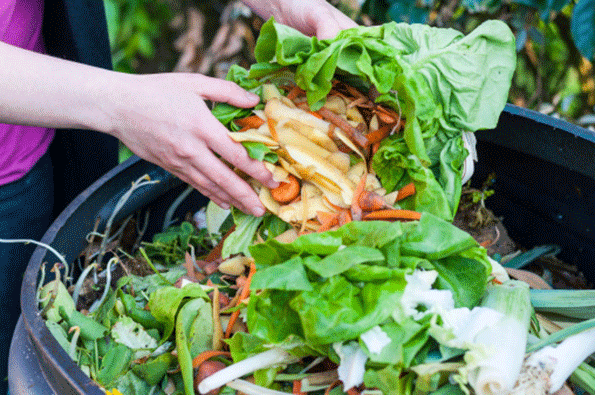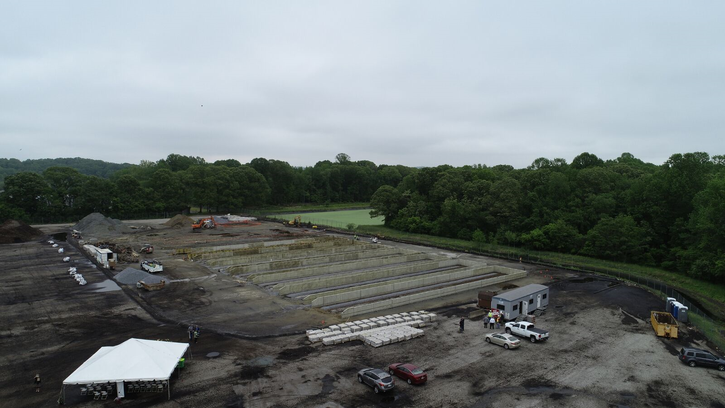Community Food Waste Programs Make Good Fit for Farmers’ Markets
Partnerships with local farmers’ markets could help communities when it comes to diverting food waste from landfill.
For communities looking to divert food waste from landfill, partnerships with local farmers’ markets offer a way to address the problem, while engaging and educating residents.
In Lehigh Valley, Pa., the Easton Farmers’ Market launched a food scrap collection and composting program in July. The Easton Compost Program is a combined effort of the city of Easton, Greater Easton Development Partnership and American Biosoils, a local composting company. Funded by a Spark grant from the Lehigh Valley Community Foundation, the compost program serves as a pilot.
The program is designed “to promote a sustainable food loop message: local food—food waste—compost—back to the local farm,” says Miranda Wilcha, compost coordinator for the program.
“We were surprised by how quickly residents got involved in the program. Initially, we planned to distribute 100 compost buckets at the farmers’ market, but we blew through that number before the first half of the day,” adds Wilcha. Now, it collects from about 100 people each week.
If residents can’t make it to the drop-off on Saturday, they can help themselves to the collection can behind the market, where they can tip their compost containers for free any time throughout the year. In addition to fruit and vegetable matter, the program accepts leftover meals, cheese and other dairy items, meats and seafood. American Biosoils composts the food scraps at its facility, which is a few minutes away. The program is new, but the city could be open to future expansion with door-to-door pickup service.
In the Washington, D.C., suburbs, the city of Falls Church, Va., started its food waste collection program at the farmers’ market in 2015.

“Food waste is 22 percent of what is going to landfills, nationally,” says Chris McGough, solid waste and recycling coordinator for the program. “In this region, recycling rates are really key. I wish it were more like a sustainable materials management kind of approach, but it is not, so waste diversion is powerful. How do you make the biggest mark? Food waste.”
McGough says when he was exposed to the Alexandria, Va., food waste collection program, which started in 2014, he thought it could be adaptable to Falls Church. Through a partnership, Falls Church bought 3-gallon kitchen caddy bins with the understanding that if the program was not successful, it would sell them to Alexandria.
The local farmers’ market was a natural fit for the idea because the city government integrated its delivery. Right away, it became clear the program fulfilled a need. “People were stoked,” says McGough. “It tapped into people who lived in condos and apartments, as well as the traditional curbside customer. Anyone was welcome to come to the farmers’ market and drop off their food waste.”
The program started with more restrictions, but now accepts dairy, cheese, meats, seafood and bones.
An important challenge of partnering with a farmers’ market, of course, is the potential for the unpleasant smell to spoil the occasion. “We were slowly pushed away from the center of the market,” says McGough. “We were very popular, but we had to be more aware of the challenges to collect it in a sanitary way with other vendors out there doing food.”
Having clean toters every week has also been important for the success of the program. For similar reasons, in Easton, Wilcha notes that its collection spot is behind the market.
After a year at the farmers’ market, Falls Church opened a permanent food waste drop-off station with eight 65-gallon toters. McGough notes that contamination rates tend to be low, probably due to the education staff provide at the farmers’ market. The drop-off programs at the farmers’ market and the facility are managed by Veteran Compost, which swaps the toters weekly. Most participants do their drop off at this facility, while 75 to 125 people drop off at the market each week.
Falls Church recently started a residential curbside compost pickup run by Compost Crew. The cost-share program is available for people eligible for curbside trash pickup. So far, it has reached about 20 percent participation.
In the District of Columbia, residents can bring food waste to designated farmers’ markets in all eight district wards, free of charge. Mayor Muriel Bowser kicked off the D.C. Department of Public Works (DPW) Food Waste Drop-Off program on Earth Day in 2017.
The farmers’ markets make strategic sense due to their popularity. “The key to successful locations for this program is to find areas of the city with heavy foot traffic,” says Annie White, who manages DPW’s office of waste diversion. “We want to meet people where they already are in order to make this as easy as possible.”
Participation continues to grow. “On our best weekend in 2017, 549 drops were made. By contrast, this year we’re seeing well over 1,000 drops each weekend. In total, we’ve collected more than 212,000 pounds of food waste so far this year that will be turned into compost instead of being thrown away,” says White.

Accepted materials include fruit and vegetable scraps, coffee grounds, tea, bread, pasta, egg shells, nutshells, corncobs, flour and flowers. The food waste is taken to community gardens that have composting bins. Once these community gardens have reached capacity, the food waste is taken to a suburban facility, the Prince George’s County Organics Composting Facility in Maryland, where it will be turned into an environmentally friendly soil amendment, says White.
The program supports the district’s larger waste diversion plan. “The District of Columbia has set the goal of achieving an 80 percent waste diversion rate, meaning that only 20 percent of our waste would be sent to landfills or waste-to-energy facilities,” says White. “Currently, about 30 percent of what we’re sending to landfills and waste-to-energy facilities is food and yard waste. This creates a big opportunity for us. Programs like DPW’s food waste drop-off program are helping us decrease what gets thrown away and educate residents about the benefits of composting.”
About the Author
You May Also Like


